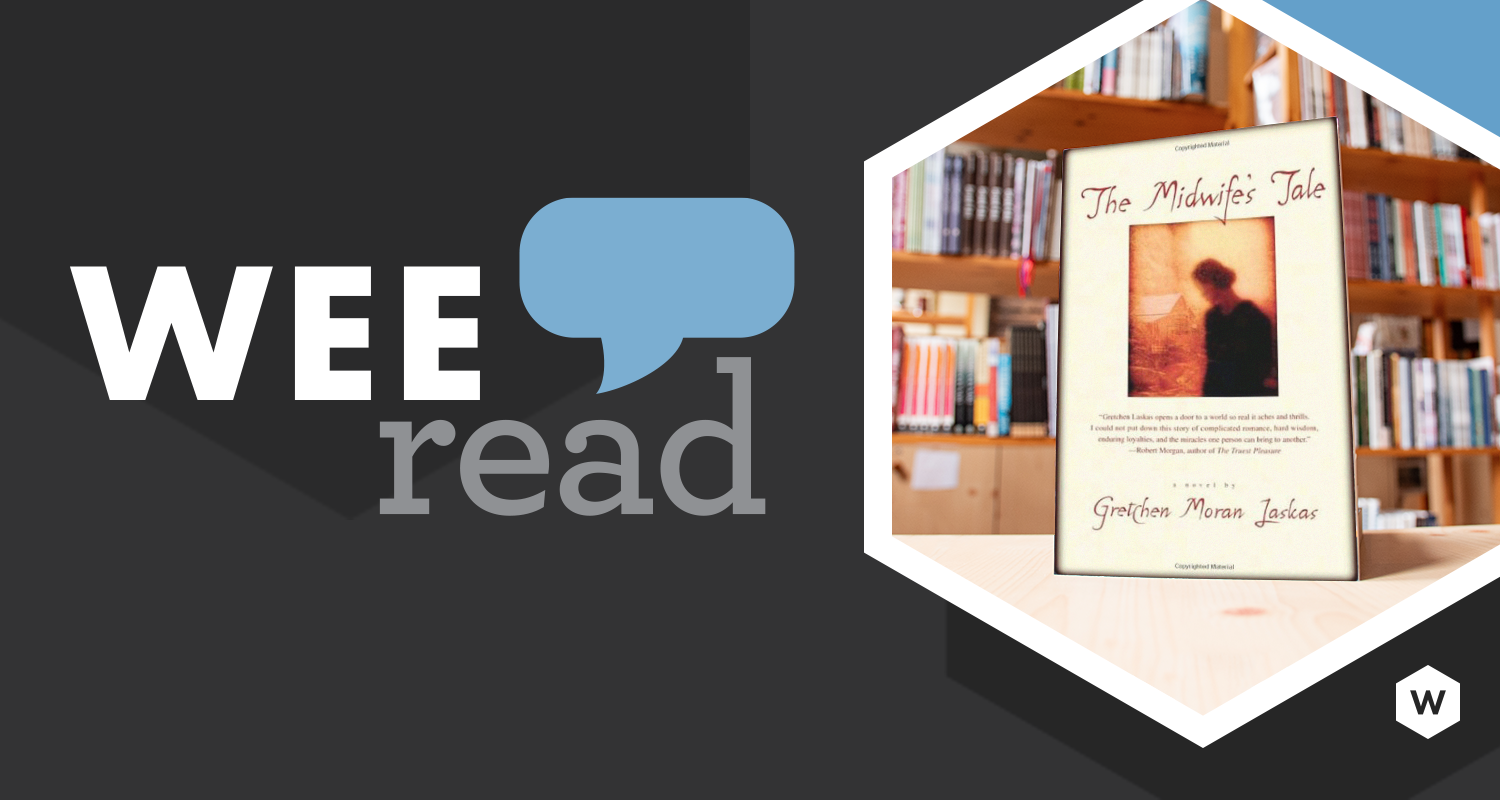From the midwives and medicine women of yesteryear to today’s frontline healthcare workers, women have provided care and healing for as long as humankind has existed. In recognition of their contributions to healthcare, the theme for 2022’s Women’s History Month is “Providing Healing, Promoting Hope.” According to the National Women’s History Alliance, the theme is “both a tribute to the ceaseless work of caregivers and frontline workers during this ongoing pandemic and also a recognition of the thousands of ways that women of all cultures have provided both healing and hope throughout history.”
In honor of this year’s theme, I decided to read and review Gretchen Moran Laskas’ novel The Midwife’s Tale. Spanning roughly from the 1910s to the 1930s, The Midwife’s Tale recounts the story of Kettle Creek’s last midwife, Elizabeth Whitely. For Elizabeth, it is a matter of fact that she will become a midwife: her mother serves as the midwife for the Tygart River Valley just as her Granny Denniker and Granny Whitely did before her. Despite her immersion in midwifery, Elizabeth becomes disillusioned with it after learning of the “midwife’s mercy”: the practice of a midwife killing an unwanted baby. She turns to medicinal herbs for a time instead, learning under her Granny Whitely, but is brought back to “catching babies” when an old flame, Alvin Denniker, begs her to deliver he and his new wife Ivy’s baby.
With Elizabeth’s help, Ivy gives birth to Lauren, a “miracle baby” born unbreathing and amazingly revived under the Harvest Moon. Elizabeth puts great stock in the circumstances of Lauren’s birth and believes the baby “had been saved for a reason, destined for great things.” In time Elizabeth’s belief would be confirmed, as Lauren proves to be a miracle in more ways than one. As Lauren’s godmother, Elizabeth is pulled further into the Dennikers’ lives and in time befriends Ivy even as she longs for Alvin. Despite her misgivings, she resumes midwifing, as well as providing women care through natural remedies.
Signs and superstitions are woven into the narrative, with the residents of Kettle Creek becoming unnerved by the mild winter of 1918. Their premonitions are realized when the young men returning from the war in Europe come back to Kettle Creek physically and mentally changed by their experiences. Elizabeth also sees a sign in the Blicker twins, a set of conjoined twins born shortly before “the horrors of influenza came down upon us, as though blown across the earth by a deadly wind.” Elizabeth’s mother shifts her attention from midwifing to helping the local doctor with influenza cases until she herself falls ill. Elizabeth nurses her mother back to health while Ivy, against her husband’s wishes, brings food to the two women quarantined at the base of Denniker’s Mountain. It is only after her mother recovers that Elizabeth learns that Ivy has passed.
In short order, Elizabeth moves into the Denniker household to care for Ivy’s daughter Lauren and offer support to a grieving Alvin. She becomes Alvin’s wife in all but name and raises Lauren as her own, unbothered by her mother’s disapproval at the haste in which Elizabeth acts. After years of pining Elizabeth is eager to claim Alvin as her own, regardless of her friendship with Ivy, and she acknowledges that “doing what I wanted was more important to me than doing right.”
Challenges continue as the valley survives the post-war boom and bust, though the Denniker household remains largely unchanged: the farm does well enough that Alvin, Elizabeth, and Lauren don’t feel the pangs of the Depression. Against this backdrop, Elizabeth struggles for a place in Alvin’s heart while caring for Lauren, who remains mute well into childhood. When Lauren finally speaks, the end result is as miraculous as Elizabeth had predicted at her birth. But when word of Lauren’s newfound voice and healing abilities spread, the denizens of Denniker’s Mountain are forced to choose between their homestead and Lauren’s safety.
The Midwife’s Tale follows three generations of women as they heal and serve those around them. All three women are healers, but each has different methods and ideologies when it comes to providing care, from Elizabeth’s mother who accepts the necessary evil of the “midwife’s mercy” while Elizabeth disagrees with it strongly enough to give up the profession she was destined for. Lauren, with her unique talents, has to find a balance between helping others and protecting herself—even when it means forsaking those she loves.
By centering her novel around midwives, Laskas takes a part of West Virginia history that is often written about—the rise of the coal industry—and offers a fresh perspective. Though her novel is reminiscent of other Appalachian works in terms of dialect, time period, and ambiance, The Midwife’s Tale stands out by putting women at the forefront. And as an eighth-generation West Virginian, Laskas has the life experience to write convincing characters and dialogue. Both her writing style and character development reminded me of Denise Giardina’s 1987 novel Storming Heaven, which serves as a master class in Appalachian literature.
Published in 2003, The Midwife’s Tale can be purchased through most major retailers such as Amazon or directly through the publisher at Penguin Random House. A reader’s guide with discussion questions is also available through Penguin Random House for those who want to use The Midwife’s Tale as a book club pick.



